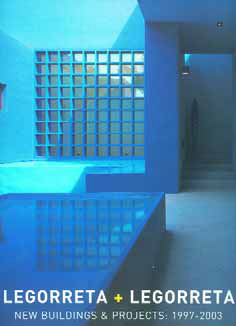modernism
Concrete is amazing material. Its presence in the modern architectural landscape is so widespread and diverse, it can be easy to miss the masterful way it's been used both as a structural and aesthetic element. Here's an example of both, a modern classic Eric Herman discovered near his home in the California desert.
Most people probably don't think of geometry as being "cool." While studying points, planes, protractors and the Pythagorean theorem may not have seemed like any fun back in high school, when you use the mathematics of form to create a beautiful hillside watershape, lines and angles become far more interesting.
Ben Lasseter welcomes challenging projects, especially those where watershapes are integral to the home's design. Working as part of an exclusive project team, one that included a legendary architect, Lasseter's firm recently completed a shimmering all-white pool that is as much a part of the property's aesthetics as the roofline of the house itself.
When the call came, it was immediately apparent just how narrowly defined my efforts on the project would be. The basic design for the pool and its spa was already complete, which made perfect sense given how completely they had been integrated into the home's overall footprint. What the architect wanted, I learned, was an expert who could come in, evaluate the plans and basically keep him and his team out of trouble with respect to all of the details and practicalities related to
When we think about Koi ponds, the images that most often come to mind are of spaces entirely naturalistic: irregular shapes, edges offering limited direct access, lots of aquatic and terrestrial plants interacting at the margins and, as a rule, little suggestion of formality in the design. That was certainly the case in a project I recently shared through
Any number of the projects we've worked on through the years have given us at Root Design Company (Austin, Texas) the sense of pride and satisfaction that comes with doing the big jobs well. Only a handful, however, rise to another level and foster a sense of accomplishment, thereby making what we do both fun and entirely special. The project covered here is one of those amazing exceptions. It came to us through the architect, Arthur Andersson of Andersson-Wise Architects (also based in Austin), which is well known locally for its daring contemporary homes and commercial structures. In this case, the architect had suspended a modern home on a steep slope overlooking Lake Austin. It had a distinctly bare-bones, utilitarian look about it, distinguished mainly by an unusual, inverted-butterfly roofline. His ideas about the swimming pool were ambitious, to say the least. The drawings called for an elevated, cantilevered lap pool constructed entirely of clear panels – a bold statement that would simultaneously harmonize with the stark simplicity of the house itself. The slope on which this was to happen was quite severe, meaning the home itself is
It’s not unusual for watershapers to have their signatures. For some, these noteworthy effects extend from their educations and personal design preferences, while for others, inspiration comes from distinctive qualities found in local landscapes or from tailoring designs to suit the characters of their clients. In our case, we at Hydroscapes (Fountain Hills, Ariz.) pull on all of the above and more in our design work. Through the years, we’ve done a lot of projects associated with Contemporary-style architecture – a specialty, perhaps, but not what we’d call a signature. This work has led us to invest lots of time in studying modern masters including Frank Lloyd Wright and John Lautner – and, as they did, in learning about Japanese garden design and the work of the great Craftsmen architects such as Greene & Greene. Those influences flow neatly together for us because all of those designers embrace simplicity of line and form as well as elegance in the use of colors and materials. It doesn’t hurt that these legacies suit our personal tastes as a husband-and-wife design team – and it helps even more that a majority of our clients these days seem to start with similar ideas in mind: They want
Back when I was still new to watershaping in the mid-1990s and working for a construction firm in Northern California, I was asked to review a project for a custom home under construction in Napa Valley. I was intrigued, partly because the identity of the client was a closely held secret and partly because all project information and bidding was flowing through an architect in Mexico City. But what really grabbed my attention was the set of plans for the home and grounds - just incredible! I'd never seen anything like it. The modernist-style home was based on big vertical and horizontal planes in brilliant colors. There were courtyard fountains, large rectilinear reflecting pools and a beautiful vanishing-edge swimming pool. The design was so outstanding that even when we missed out on the project, I held onto
The fire came swiftly, sweeping through the dry, late-summer undergrowth, and the land was quickly blackened and denuded. A month later, the rains came, hard and lashing, and rivulets of water ran down the hillside. Torrents of mud and stone ground away the soil and washed out the base of a tree that happened to be in the way. The tree fell. Branches became splinters on the ground. The noise the tree had made as it fell was intense: a cracking and groaning sound followed by crackles as limbs snapped against still-standing trees. Now it lay there, its roots all but pulled from the ground.Ten years passed, and as the tree's bark rotted, small saplings had begun to grow from its base. The creek ran close by, gurgling and never-ending, its water wending its way among the rocks and other fallen trees toward the ocean just half a mile away. This tree would serve a purpose in its death: In my work as a sculptor, I seek out






















